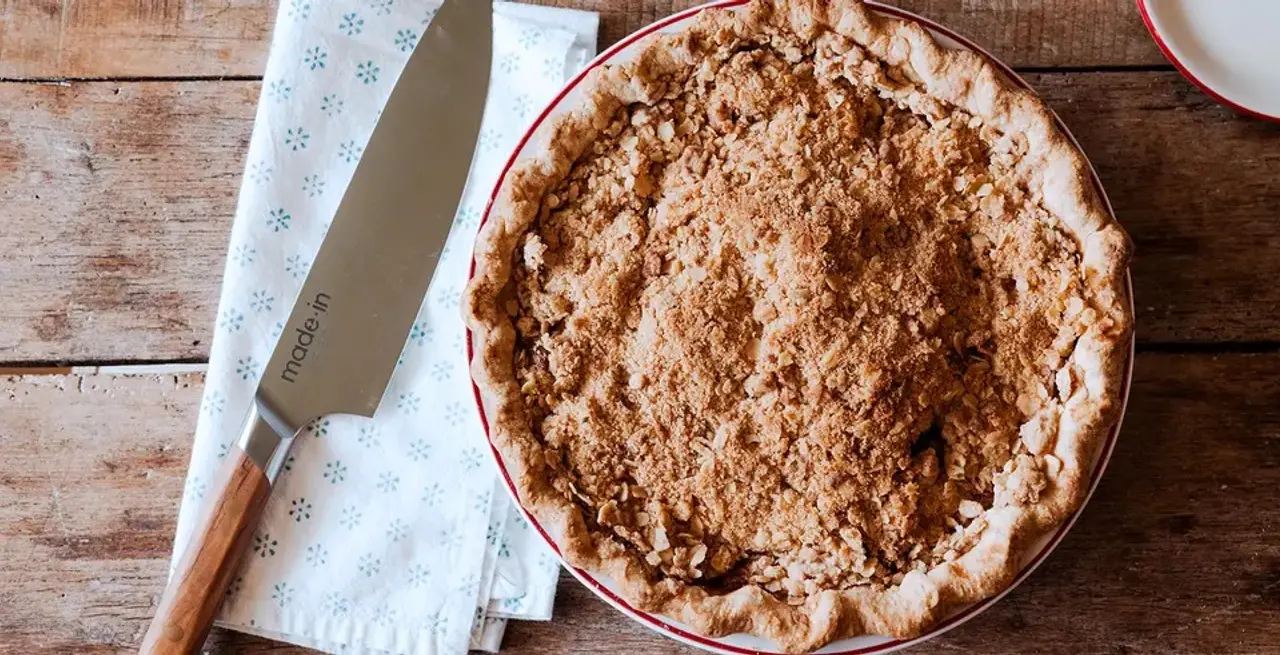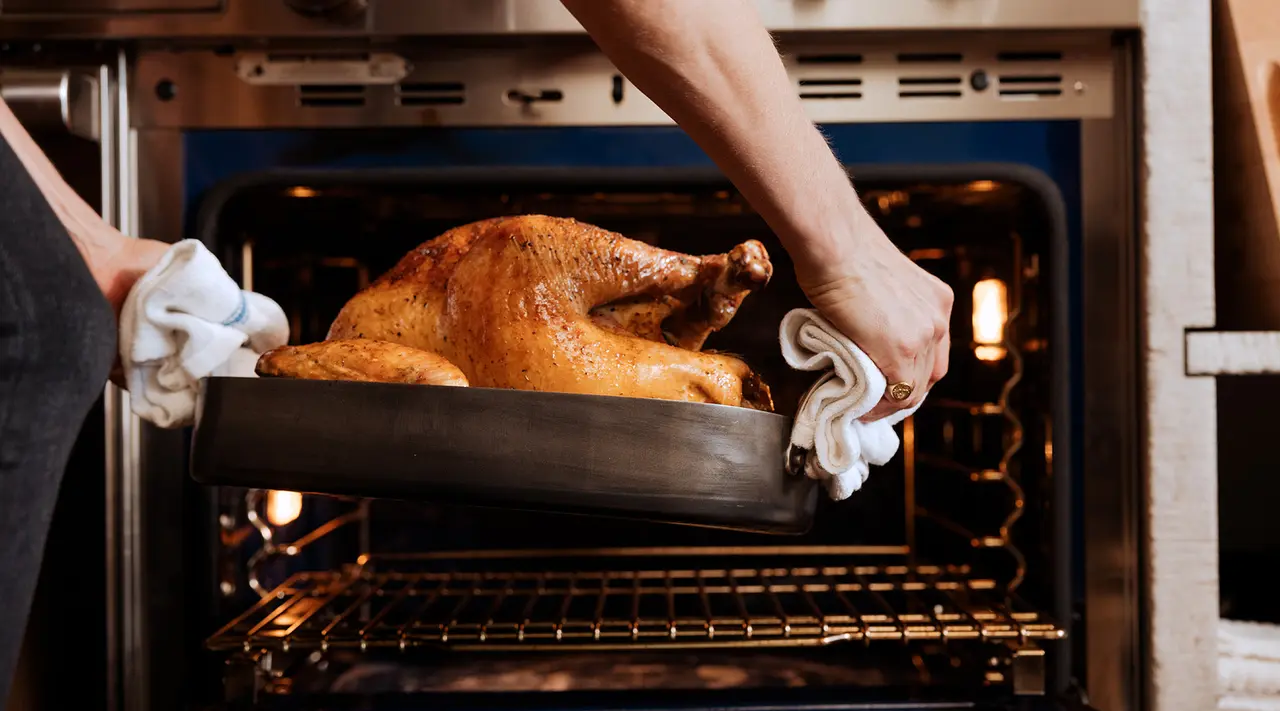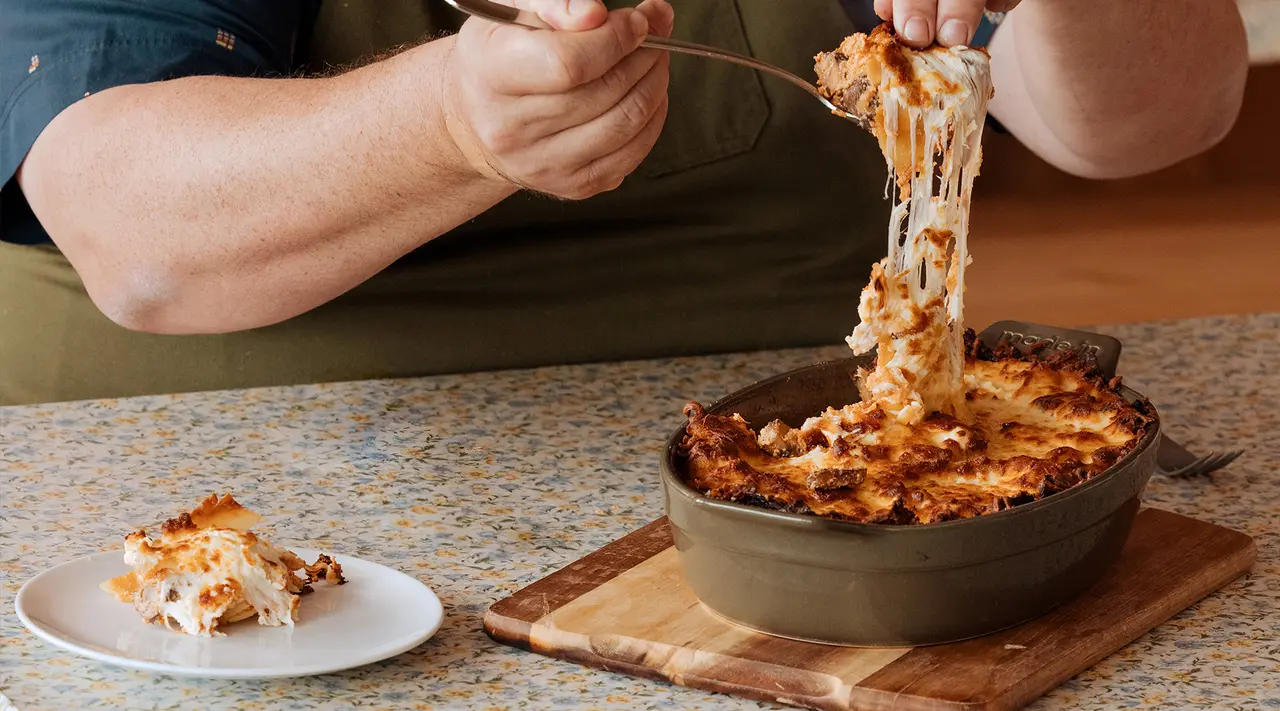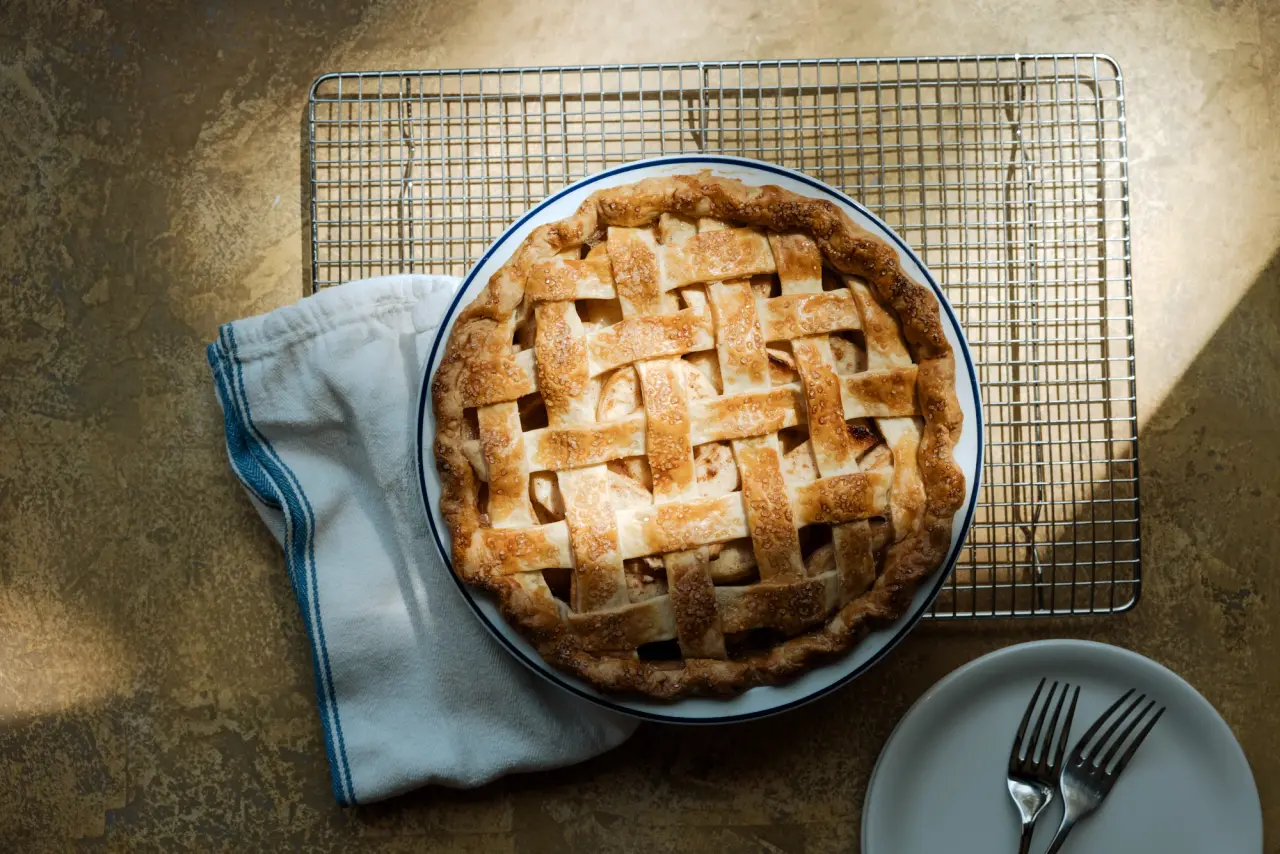Your oven might be the most-used cooking appliance in your kitchen, for good reason: Simply preheat to the prescribed temperature, plop your baking dish on the rack, and set a timer. But by learning the key differences between an oven’s main functions—baking, roasting, and broiling—you’ll gain both extra insight and cooking confidence.
Temperature is the biggest difference among each cooking method, with baking using the lowest, gentlest temperatures and broiling the highest and most intense. The ingredients and their preparation style also dictates which setting you’ll use—you don’t roast a cake, you bake it. Which method you choose also depends on the desired finished texture and how brown or golden your food should be once out of the oven.
Read on to learn more about the intricacies of each method, so you’re prepared to decide when to bake vs. roast vs. broil.
What Is Baking?

Depending on the model you own, your oven’s heating elements will be on the top and bottom and sometimes in the back. Baking uses each heating element, surrounding food with moderately hot air that usually ranges from 300F to 375F. Your food cooks fairly slowly at these temperatures, giving it time to develop flavor. In the case of baked goods like cakes and breads, a relatively low and slow temperature also lends stability and structure to the finished product.
In a conventional oven, it’s best to rotate your item to ensure even cooking to combat any hot spots that may unevenly bake your food. Whether it’s a baking sheet lined with cookies or a cake pan filled with batter, rotate the baking dish 180 degrees throughout the baking process and, if using more than one oven rack, you should also swap the baked goods between racks. If you don’t, you may notice parts of your dish browning or rising faster than others.
Convection ovens come equipped with a fan to push air around and promote even baking and browning, so you shouldn’t need to rotate your pans with these ovens. If you notice uneven browning, though, rotate those pans next time.
A word of caution, though, if you live at high altitude (above 3,000 feet): Opening the oven midway during a bake can cause cakes and quick breads to sink in the middle. Since higher altitudes equate to lower air pressure, baked goods rise more quickly and their stability can be compromised with sudden drops in temperature. In the case of high altitude baking, rotate cakes or quick breads only if you notice uneven browning near the end of the baking time.
When Should You Bake?
Baking is like the default setting—it’s the basic function your oven was made to do. When you’re making cakes, cookies, muffins, and rolls, you’ll be baking. (They’re called baked goods for a reason!) Rule of thumb: If you’re making a batter or dough, you’ll be baking it later.
Baking helps food retain moisture, since a relatively low temperature cooks food slowly and prevents it from drying out. You’ll also be baking when you’re making a casserole, stuffing, baked pasta, and for reverse searing. As for bakeware, you can use a variety of dishes, from pie dishes to sheet pans to a classic, like our 9x13” Baking Dish.
What Is Roasting?

Roasting is similar to baking—you’re using the same heating elements of your oven—but it’s done at higher temperatures, beginning at 400F. A higher temperature creates more browning, crisping, and even caramelization on the outside, while keeping the inside soft and tender. Vegetables and chicken benefit from roasting, but you can also roast softer ingredients like grapes, tomatoes, and mushrooms. You’ll get a browned, perhaps even blistered outside, and a soft, warm inside.
Roasting quickly evaporates liquids, concentrating flavor. As with baking, it’s best to rotate the pans about midway through roasting, to make sure your food cooks evenly.
When Should You Roast?
You’ll roast when cooking ingredients that have a solid structure when raw—root vegetables, squash, potatoes, and the like. Meats do well, too; a roasted chicken might be one of the most perfect foods around. Pork shoulders and beef tenderloins also benefit from roasting’s high temps, creating crispy skin encasing juicy, flavorful interiors.
Like with baking, you can roast on a variety of cookware, including sheet pans or our Blue Carbon Steel Roasting Pan, engineered to promote moisture retention and even browning. Sheet pans are versatile, but a roasting pan will really up your roasting game with both its heavy duty construction and excellent heat conducting capabilities.
What Is Broiling?

Broiling takes your oven and dials it up to 11. Instead of using all the heating elements like baking and roasting, a broiler will use only the top heating element, blasted up to temperatures of 500F to 550F. (In some ovens, the broiler is located in a drawer on the bottom.) Heating from the top-down quickly sears or chars foods, meaning it's best when you want a crispy edge, extra browned and bubbling cheese, or golden and crispy skin. To make the most out of your broiler, move the top rack as close to the heating element as possible. Be sure to keep a close eye on your food when broiling, as those high temps make food cook extra quickly.
When Should You Broil?
Broiling is often used after baking or roasting to get a nice, crispy browned top without overcooking the inside of your food. Fish is great finished off broiling, as it’ll crisp the skin without overcooking the flesh. If you don’t own a grill, broiling is a good way to approximate its high heat and quickly char asparagus or cherry tomatoes.
Broiling can also mimic a culinary torch, allowing you to use it to create a charred, bubbly layer of cheese or bechamel on top of a casserole, pasta, or pizza. It also caramelizes sugar quickly, so you can get close to a brûlée effect on desserts—or even just a simple slice of cinnamon toast.
Ready to Cook?
Now that you know when to bake vs. roast vs. broil, browse our tested and easy-to-follow recipes and put your skills to the test with a classic apple crumble pie or a big batch of golden-brown roasted vegetables.























